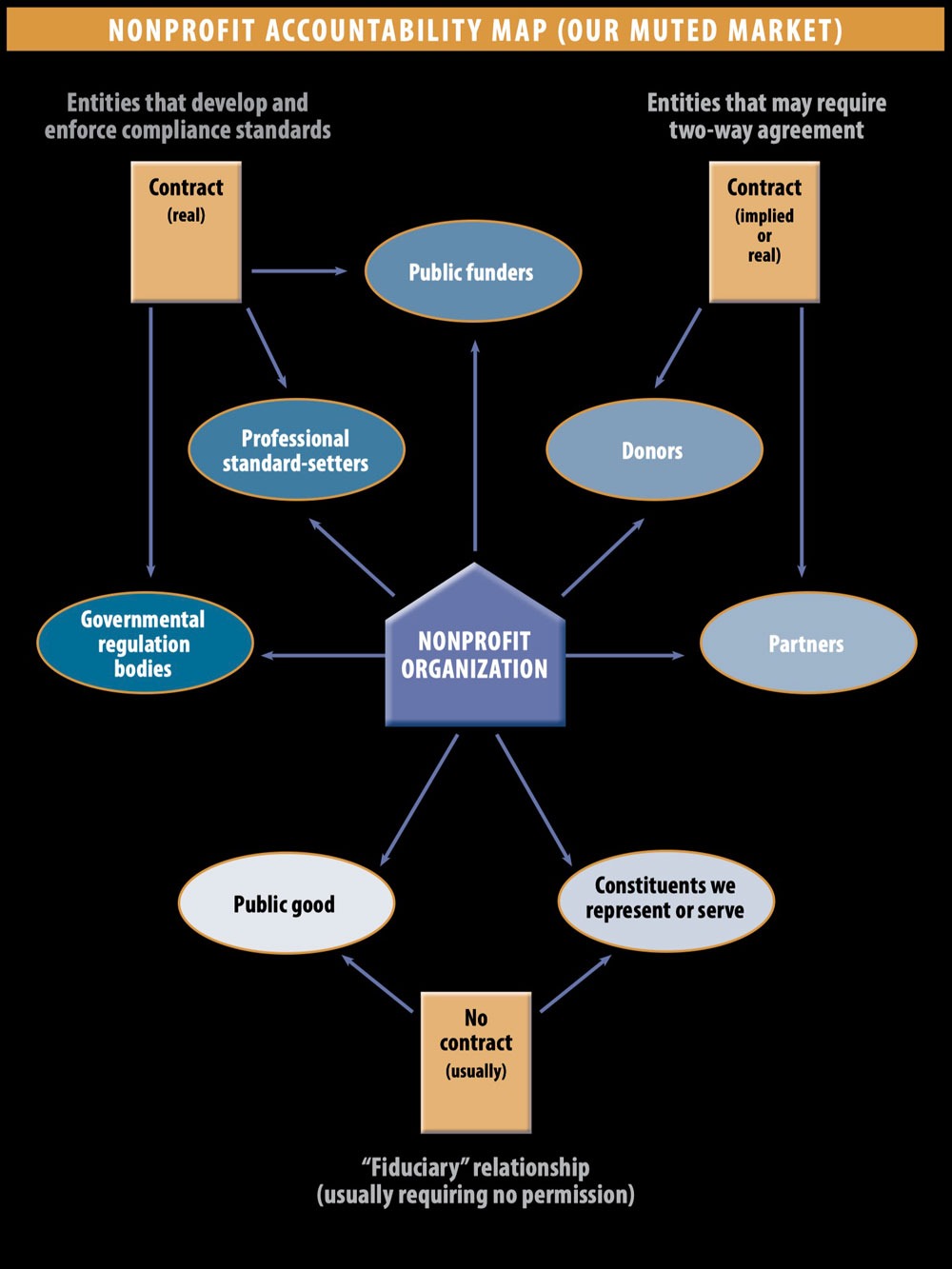
This interview comes from the summer 2019 edition of the Nonprofit Quarterly, where it was published as “The Collision Course: A Conversation about Stakeholders with Tom Kochan.” It was first published online on July 8, 2019.
Nonprofit Quarterly: Five years ago, we were watching an interesting new kind of stakeholder scenario play out with a New England grocery chain, Market Basket, in which customers and others joined with employees to protest an action by the board to unseat the company’s CEO. That action, which was successful, was extremely unusual at that point—and your feeling, Tom, was that this kind of cross-stakeholder group action would become a growing trend. NPQ has been watching with interest the Red for Ed movement and all of the recent cross-stakeholder activity around Google and Uber. Do you see these instances as trends in the balancing between the shareholder/stakeholder environment?
Tom Kochan: I think there are two trends going on in society, and they may be on a collision course. On the one hand, we see much more activism on the part of people in the workforce—both regular employees and contract workers—challenging the idea that corporations should only respond to their shareholder constituents.
So, they’re taking more direct action at Google—with grievances over issues around sexual harassment—and also going beyond that to talk about corporate governance and the need to put employee representatives on the board of directors. Who would have ever thought that this would come from Google employees? But it has, and you see the same kind of activism at Instacart, a gig economy company that provides people to do your grocery shopping and deliver the groceries to your house. Workers revolted over a change in Instacart’s compensation strategy that they felt was taking their tip money and giving it back to the firm. They protested and sent out a petition, and they got the company to change its policy to be more equitable.
And then you see contractors challenging gig economy companies like Uber when they roll out their public offering, their IPO, saying, “You’re going to get rich, the shareowners are going to get rich, the private equity firms that bought all these shares and that will underwrite this will do very well, but meanwhile our incomes are going down and you’re squeezing us and we’re not benefiting from this at all.”
At the same time, teachers are becoming much more militant, whether they are under a collective bargaining agreement or not. We’ve seen these teacher protests and strikes from coast to coast, and they’re bargaining not just for themselves but for what they call the common good—to try to get more resources for their students and to get the state governments to rebuild commitment to a strong educational budget and system. So, we’re seeing all of that happen, and that’s a sign that people are getting more restless around the shareholder-maximizing view of the world.
And we don’t see corporations responding in significant ways. In fact, you see the Ubers focusing on shareholder maximization and on going public—and the pressures on the executives to somehow get profitable are just going to intensify. And how are they going to get profitable? Most likely, they’re going to get profitable by squeezing the workforce.
So, companies are not responding. And then you have the deep divisions that are so apparent now in Washington, which is just sticking its head under the rug and not dealing with the real inequality pressures and the concerns around the division between winners and losers from globalization—and maybe the same pattern developing with technology. So, we have a society that’s seeing and hearing unrest but not responding to unrest, and I think those two trends are moving toward some kind of collision.
NPQ: That sounds relatively disastrous.
TK: Well, I’m not sure it is disastrous. I think we’re going to need a collision. We’re going to need politicians and business leaders to wake up to the fact that employees—at least, many of them—are feeling left out of this economy. And the economy is so strong now and unemployment is so low, yet many people don’t feel that they are benefiting. Their wages haven’t really grown. They’ve grown a little bit better this year than they have in recent years, but even the new report from the Bureau of Labor Statistics shows that when you adjust for inflation, last year’s wages went up about 1 percent for the average worker.1 We are not going to close the inequality gap if we stay at that slow rate of growth. It’s going to make a little bit of progress, but we’ve got to do much, much better.
NPQ: Can you talk a little bit about how that fits into this particular era—which is, to a great extent, technology-enhanced or even technology-driven—and about the function of technology in the stakeholder element of that dynamic?
TK: If we just let technology take its course without being more proactive in shaping it, then we’re going to see more inequality, because it’s very clear that changes in technology are going to eliminate some jobs. We don’t know how many, but the changes are going to have a bigger effect on lower- and middle-skilled jobs than on higher-skilled jobs, and they’re going to benefit people with high-level skills—both analytical skills and the social skills needed to use technology effectively. And that is going to increase the divisions between high- and low-income workers.
But this is not inevitable. We don’t have to wait for technology to have this effect. If we start taking a proactive approach, there’s no iron law of physics or technology that determines how technology is designed, what problems it’s going to address, and how it plays out in the workplace.
If we give workers an opportunity to help shape how technology comes into the workplace, then we can use it to augment work—to make work easier and maybe safer, and free up the workforce to do new things and to work with technology and to get higher levels of productivity, innovation, and get better-quality jobs. So, we have to get proactive in how we use technology to avoid the worst and to get the full potential benefits for society. And then we have to worry about distributing those benefits in an equitable way, because some people will lose their jobs, and we need to make sure that we provide adjustment assistance and income supports for those people who are going to be most adversely affected.
NPQ: Something the Red for Ed movement has modeled recently is this alliance of labor with other stakeholders, so that it’s not just the workers but also the students’ parents and other community stakeholders voicing concern—concern about some of the same issues that the workers are concerned about. It seems to me that’s also a part of this new technological environment, in that it has become easier to make those cross-group connections at this point. Can you speak about that dynamic?
TK: It’s clear that the newest forms of worker advocacy that are developing around the country are making use of technology as a source of power and as a source of communicating and reaching across traditional stakeholder lines; so, teachers, for instance, reaching out and making their case to the public that they’re not only protesting and striking to improve their own wages and conditions but also to support public schools and public education, and to get the resources needed for kids to thrive in their classrooms.
Sign up for our free newsletters
Subscribe to NPQ's newsletters to have our top stories delivered directly to your inbox.
By signing up, you agree to our privacy policy and terms of use, and to receive messages from NPQ and our partners.
That, I think, is a very early-stage indication of where we are going to see worker advocacy grow and expand in the future. It may not take the form just of traditional collective bargaining and strikes to improve wages and working conditions. Certainly that will be part of it, but any strike that wants to be successful today has to engage the public.
You have to take your narrative to the public and say, “This is why we are taking this action and why it may inconvenience you.” We just had a strike here in New England with Stop and Shop workers, and that was a strike where the public again supported the workers by not crossing the picket lines and by recognizing that they were striking against a company that was trying to take away benefits—retirement benefits to some extent, cutting back on healthcare benefits, and reducing the quality of the jobs for the next generation of young people as they come into the retail industry.
The public understood that and essentially boycotted the stores, even though the stores tried to stay open. And that, ultimately, was what led to a settlement of the strike.
So I think people need to understand why workers might take action. The public is becoming much more responsive to protests or strikes that are not just focused on the workers’ self-interests but appeal more broadly to the public’s sense of fairness. My guess is that we are going to see more protests like this in the future.
The teachers, starting in West Virginia, worked hard to prepare the public for their action, saying, “Here’s why we need to get more resources into education in this state.” Once that worked for them, you saw similar efforts in other states. And then the strike in Los Angeles was what they called “bargaining for the common good”—bargaining, certainly, for improvements in wages for teachers, but also, again, for improved supplies, staffing of nurses and others in the schools, and making sure that they have resources to meet the needs of the student population as they find it. The public by and large supported the teachers in that effort.
So, I think this is a sign that the American public is waking up to the fact that there are some inequalities that can be addressed if we work together, and I don’t think that’s lost on the labor movement, and it’s not lost on workers who take spontaneous action outside of the labor movement—like the Amazon employees who were concerned about some of the ways in which Amazon is not addressing climate change, and the way Google was using its power to force contractors (as well as regular employees) to use arbitration to resolve discrimination claims. And that has spread now to other organizations. I think to the extent that we’re seeing these very public displays of grievances, we will see more cross-group coalitions come together.
NPQ: That’s very interesting. Have you been surprised by this?
TK: No, not completely. As you noted earlier, we saw a preview of this with the Market Basket dispute back in 2014. And it was so clear that what resonated with the public was that it was a protest by employees; that this was a group of employees across the board—managers and clerks and truck drivers—putting their jobs on the line to save a company from going toward a more shareholder-maximizing view and to stand up for what the company had achieved in terms of low prices and great customer service. And the customers knew the employees, and they said, “That’s my store”—and they really demonstrated that there’s a public coalition that will come together when people see employees standing up for something that makes sense to them. So, that was an early example of that spirit.
We’re seeing the same themes now in research that we’ve done at MIT’s Institute for Work and Employment Research. We’ve done two national surveys. In the first, we asked a national sample of workers how much of a voice they have at work and how much of a voice they think they ought to have, and we see big gaps in the amount of voice that workers experience compared to what they think they ought to have on a wide array of issues, from wages—and certainly fringe benefits—to training, to respect on the job, to protections against harassment, to how technology is being used. So, you can see that there’s more restlessness in the workforce. That same survey showed that more workers today would join a union if given the opportunity than at any time in the last three decades. That’s another indication of the unrest that’s below the surface out there. And then we followed that up with a second survey, in which we asked people what kind of worker representation they would prefer if such a thing were available. We gave them a bunch of choices on different forms, and what they came back with was, “Yes, we want collective bargaining, but we also want more individualized services like training and healthcare coverage that move with us in retirement, security programs that move with us across jobs, and we want a stronger voice in the corporation—including support for having worker representation on corporate boards.”
So, I think the workforce is telling us, both through actions and through these surveys, that workers want to see change—and it’s up to the institutions, it’s up to the business community, it’s up to government policymakers, and it’s up to labor to respond to what the workforce is telling them.
In the end, I think we’re on the cusp of a debate over how to build what I call a new social contract. I’ve used that metaphor in my research and in my teaching for a long time. This afternoon, we’ll have our wrap-up session of this big online course that I teach for people out in the world—it’s not MIT students, it’s anybody who wants to sign up for it. The class is on shaping the work of the future. The last exercise we do is build a new social contract: the students make proposals and then they rank them, and in the end we come up with a new social contract—and it’s pretty fascinating. From what I’m seeing this time around, they’re saying, “We certainly want reforms in education to make sure that we have the skills for the future—that’s an important part of it—and we need more lifelong learning, and so on; but we also want corporations to be held accountable for providing good jobs and for opening up to more diverse boards of directors, including workers.”
These participants are calling on labor to continue to innovate and to look for these new forms of organizing and representing workers; and they’re calling on government to meet these needs for a living wage and for portable fringe benefits, and to do its job of bringing the other stakeholders together to work in a collaborative way to get the economy working for everybody.
I don’t know that we will see this as a central theme in the presidential election coming up, but I do think that these pressures are leading toward a dialogue over what the next social contract ought to look like. That might not be the metaphor that people use, because it may not play well in all parts of our society—but I do believe it’s a dialogue that says, “Let’s come together and start focusing on our common good and our common needs, and bridge these divides that are so apparent in society, and get on with the task.” I think that’s going to be where the next election is decided: who can present the most commonsensical and viable strategy for bringing this country together and getting us on the right track.
Note
- Bureau of Labor Statistics, U.S. Department of Labor, “Real Earnings – April 2019,” news release no. USDL-19-0777, May 10, 2019.
Tom Kochan is the George Maverick Bunker Professor of Management, a professor of work and employment research, and codirector of the MIT Institute for Work and Employment Research at the MIT Sloan School of Management. Kochan focuses on the need to update America’s work and employment policies, institutions, and practices to catch up with a changing workforce and economy. His current research and teaching focus on actions needed to use advancing technologies to help close the divisions in society and produce a more broadly shared prosperity. His most recent book (with Lee Dyer) is Shaping the Future of Work: A Handbook for Action and a New Social Contract (MITxPress, 2017).











